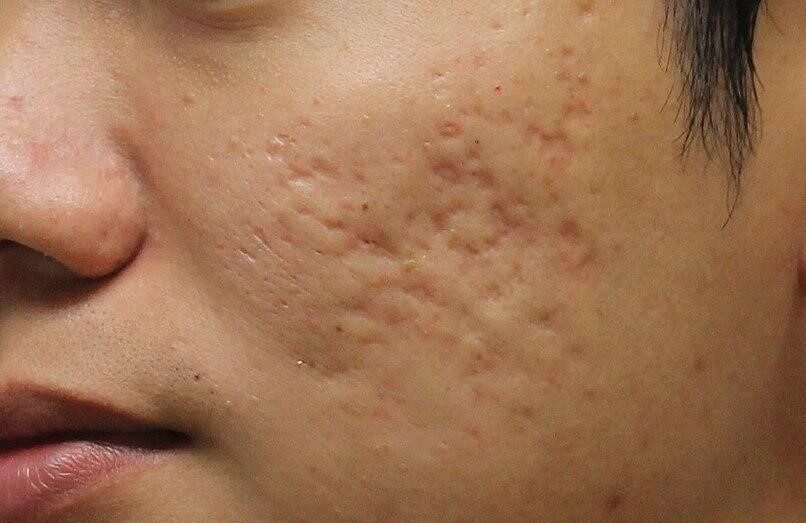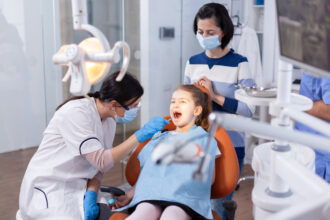Types of acne scars and its treatment
- 1 Types of acne scars
- 1.1 Atrophic Scars
- 1.1.1 Boxcar –
- 1.1.2 Ice Pick –
- 1.1.3 Rolling –
- 1.2 Hypertrophic or raised scars
- 1.3 Dark Spots
- 2 At-home treatments
- 2.1 Alpha-hydroxy acids
- 2.2 Lactic Acid
- 2.3 Retinoids
- 2.4 Salicylic Acid
- 2.5 Sunscreen
- 3 In-office procedures
- 3.1 Chemical peeling
- 3.2 Botox Injections
- 3.3 Punch Excision
- 3.4 Dermabrasion
- 3.5 Micro-needling
- 3.6 Laser resurfacing
Acne breakouts are common issues faced by teenagers and adults. Irrespective of your age, acne is bound to get you. What’s even more frustrating is when these leave behind marks of their deed. Acne scars are stubborn and refuse to go quickly. They also make our skin look dull and dark. Acne scars are formed when acne penetrates deep into the skin and damages the underlying tissues. Scars leave behind a mark, a spot, or even indentations.
While these aggravate the suffering and are a constant source of distress, the good news is that acne scars can be treated using various procedures and home remedies. Home remedies work effectively for some people, but you’ll have to consult a dermatologist for stubborn scars. Before leaving your house, ensure your protective equipment is in place.
Types of acne scars
As mentioned, acne scars are formed when the pimple penetrates deep into the skin, damaging the tissues beneath it. Before you try to treat your scars, understand the type of scars you have. Each type of scar responds differently to a particular treatment.
Read on to understand the type of acne scars
Atrophic Scars
Atrophic scars are the most common type of scars on your face. Look for a depressed scar that sits below the surrounding skin. Atrophic scars are formed due to a lack of collagen production when the wound is healing.
There are three types of atrophic scars:
-
Boxcar –
Boxcars are wide, u-shaped scars with sharp edges. They can be shallow or deep. The shallower they are, the better they respond to treatment.
-
Ice Pick –
Narrow, v-shaped scars shaped like ice penetrate deep into the skin. They look similar to chickenpox scars and are round or oval. These scars are the most difficult to treat as they penetrate deep into the skin.
-
Rolling –
Rolling scars are broad depressions with irregular or round edges that have a rolling appearance.
Hypertrophic or raised scars
This type of scar, most commonly found on the back or chest, stands above the surface of the surrounding skin. It is caused by the overproduction of collagen while healing.
Dark Spots
Discoloration left behind when a pimple has cleared is not a scar. Purple, red, or brown spots left behind by the zits often fade with time.
At-home treatments
Before starting your treatment, consult your dermatologist. Only a professional can guide you through the nature and treatment of your scar. A dermatologist will also help you identify whether your scars are genuine and not caused by some other condition.
Alpha-hydroxy acids
Alpha-hydroxy acids (AHAs) are present in products used to treat acne. They help remove dead skin, prevent clogged pores, and make scars appear less noticeable. The mild acid exfoliates the outer skin and helps remove discolouration and rough skin.
Lactic Acid
Lactic acid is present in numerous serums, lotions, peels, and ointments. If you don’t want to buy products, use diluted apple cider vinegar as a toner. Apple cider vinegar is known for the presence of natural lactic acid, which is best for all types of scars.
Retinoids
Retinoids are another active ingredient used for smoothening scars. They speed up cell regeneration and improve skin texture. Using products with retinoids as active ingredients can help reduce discolouration and make scars less noticeable.
Retinoids tend to make your skin sensitive to the sun, so apply sunscreen daily when using products with retinoids as active ingredients.
Salicylic Acid
Salicylic Acid is present in most products used for smoothing acne scars, whether pads, lotion creams, or face cleaners.
When applied topically, salicylic acid clears pores, reduces swelling and redness, and exfoliates the skin. You can try including products rich in salicylic acid in your daily routine. Consult your dermatologist before pulling off any stunts, especially when using chemicals on your skin.
Sunscreen
Sunscreen acts as a protective layer that protects your skin from the sun’s harmful ultraviolet radiation. Sun exposure can darken scars and make them even more noticeable. Wearing sunscreen daily reduces the chances of darkening the skin.
In-office procedures
If your scars are too deep and at-home treatments are not working, try procedures to smooth your skin.
Chemical peeling
This method is used to treat deeper scars. It uses solid acids or chemicals based on the severity of the wounds, skin type, and the scarring caused by them. In chemical peeling, the outer layer of skin is removed to reduce the appearance of scars. Chemicals such as trichloroacetic acid or glycolic acid are used to treat the wounds on your face.
Botox Injections
Botox, or Botulinum toxin type A, is a prescription medication used to smoothen the muscles of the face. It is a popular, expensive, and painful method of smoothing the skin. Botox effectively treats scars and puckered skin around the infected area. A single dose of the Botox injection shows immediate effects on the skin’s texture.
Punch Excision
As the name suggests, Punch Excision is a method wherein a medical professional surgically removes the scar mark on your face with a punch-like tool. The punch used is the same size as the acne mark.
Dermabrasion
Dermabrasion is one of the most sought-after techniques for removing facial scars. This method is reserved for profound acne scars. The procedure involves removing the damaged top layer of the skin with a device. It also profoundly exfoliates the skin and thus reduces the appearance of blemishes or dark scars on the skin.
Micro-needling
With technological advancement, we now have various methods to treat acne scars on our faces. Micro-needling is one such gift of technology. In this procedure, a small hand pen or a roller-like needle is used to prick the skin on the surface of the scars, thus puncturing the skin. The skin produces more collagen to heal the punctured skin, reducing the scars’ appearance.
Laser resurfacing
Laser treatment has surged because of the lack of chemicals and scrubs. Laser resurfacing involves removing the top skin to reveal the younger skin cells beneath, reducing the visibility of scars and increasing the skin’s surface area.
There are many procedures available in the market; kudos to technological development. You can opt for surgeries in case of deeper scars. Most of these surgeries are performed in an office, so sit with your audiologist and get their opinion. According to your doctor, opt for the best-suited procedure. Acne scars can be frustrating, but with the proper guidance, you can smoothen your skin. The best way to treat the wounds is to avoid them in the first place. Avoid picking and plucking your zits.
Considering the virus still lurking around in the environment, schedule an online consultation session rather than going to the office. If you step out for your procedure, ensure you disinfect your hands before leaving and carry a mask.

















